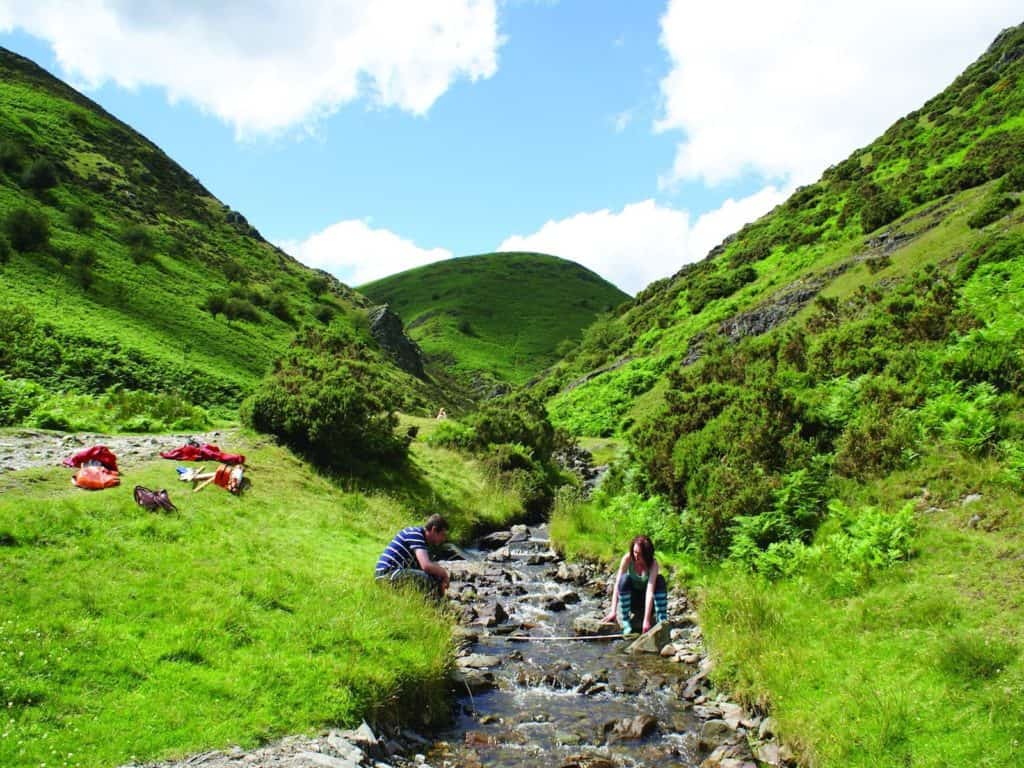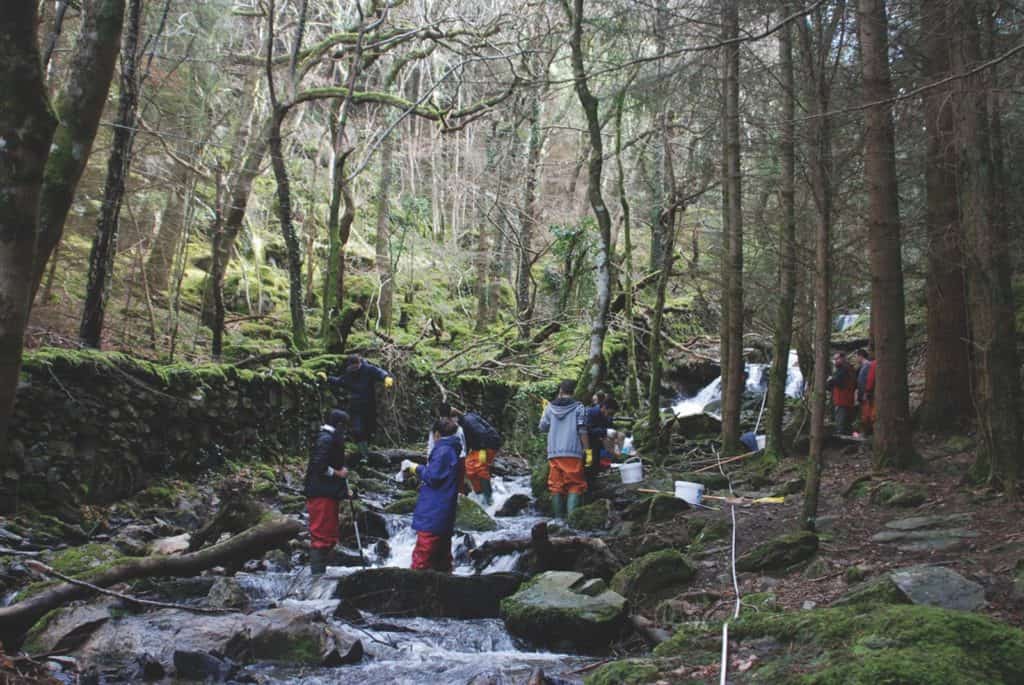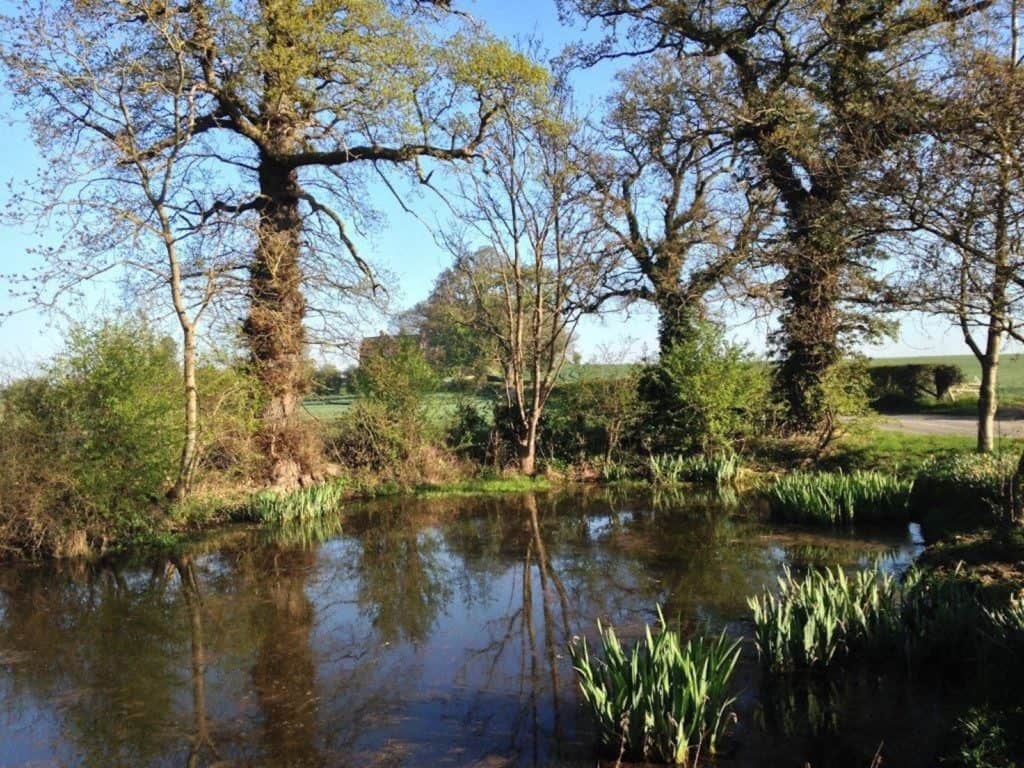What is biodiversity?
Ecological diversity (or biodiversity) is the total amount of variety of life on earth.
Biodiversity can be investigated at different levels.
- Habitat biodiversity: the number of different habitats in a given area.
- Species biodiversity: the number of different species within a certain habitat.
- Genetic biodiversity: the variety of genes within a species.
Habitats with high species and genetic diversity generally make habitats more resilient. This means they are more likely to cope with stresses brought about by changing conditions, such as climate change, disease or pollution incidents.
Biodiversity in freshwater habitats
Freshwater habitats can be divided into two broad categories:
- Lentic freshwater: still water (ponds and lakes)
- Lotic freshwater: moving water (streams and rivers)
What questions do biologists ask?
You can ask many scientific questions about contrasting areas within a similar habitat. Here are some examples.

- Describe how you would measure the diversity of invertebrates in this stream
- How does the diversity of invertebrates vary between pools and riffles in this stream?
- Is this variation in diversity related to abiotic factors?

- Does the invertebrate diversity of this stream change with distance from the source?
- What abiotic factors change in the stream with distance from the source?
- How might invertebrate diversity in this stream be different in 6 months’ time?

- Why does invertebrate diversity vary betwen different parts of this pond?
- Which part of this pond has the highest invertebrate diversity?
- How should this pond best be managed?
What questions could you investigate with fieldwork?
Here are some examples. Each research question has been split into 2 or 3 sub-questions.
| Research question | Sub questions |
|---|---|
| Investigation into the effect of velocity on the diversity of freshwater invertebrates | How does invertebrate diversity (species composition and abundance) differ at different velocities e.g. between a pool and a riffle? What other abiotic differences are there? |
| Investigation into the effect of substrate on the diversity of freshwater invertebrates | How does invertebrate diversity (species composition and abundance) differ in different substrates e.g. between parts of a stream with a rocky bed and a muddy bed? What other abiotic differences are there? |
|
What is the effect of water pollution on freshwater invertebrate diversity? | Compare diversity on either side of a point source of frehwater pollution. What abiotic differences are there? |
Synoptic links
A good investigation will make links between different parts of the A-Level Biology specification. Here are some possible synoptic links for investigations into freshwater habitats.
| Synoptic link | Detail |
|---|---|
| Transpiration and gas exchange | Oxygen supply in different freshwater micro-habitats. |
| Photosynthesis | Limiting factors such as dissolved nitrogen and phosphorus, sunlight and dissolved oxygen. Light and dark bottles |
| Conservation | Management of ponds and streams for diversity. |
Before you start
Try to carry out a baseline study before you start your investigation. In this study, try to make sure that only the factor that you are investigating varies. This can be done by measuring many abiotic factors, and finding out which ones are significantly different between the two or more areas you wish to investigate. To do this you may wish to carry out a statistical analysis such as a Student’s t-test on your abiotic data.
Make sure that any factor you are investigating has had time to produce an effect, for example:
- Changes in vegetation in a stream at one site are unlikely to be visible for at least 2-3 weeks,
- Changes in species composition of plants and invertebrates may not be significant for two or more growing seasons.
- Significant differences in temperature and oxygen levels are hard to measure at one location in one day. Longer term studies over the course of a year are more likely to show a difference in these factors.

Secondary and Further Education Courses
Set your students up for success with our secondary school trips and courses. Offering excellent first hand experiences for your students, all linked to the curriculum.
Group Leader and Teacher Training
Centre-based and digital courses for teachers
Experiences for Young People
Do you enjoy the natural world and being outdoors? Opportunities for Young People aged 16-25.
